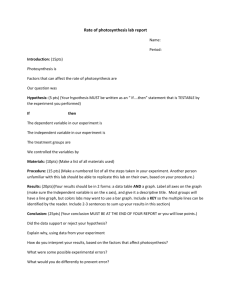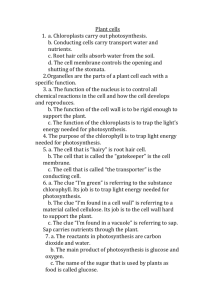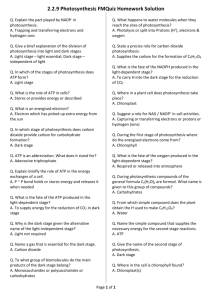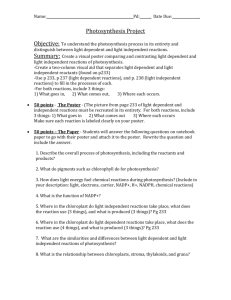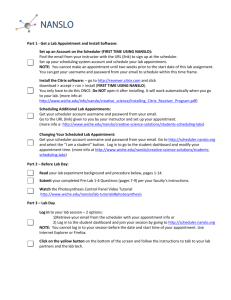Howard Visit #2 Notes - ESCI-INTERNS-FALL-2014
advertisement
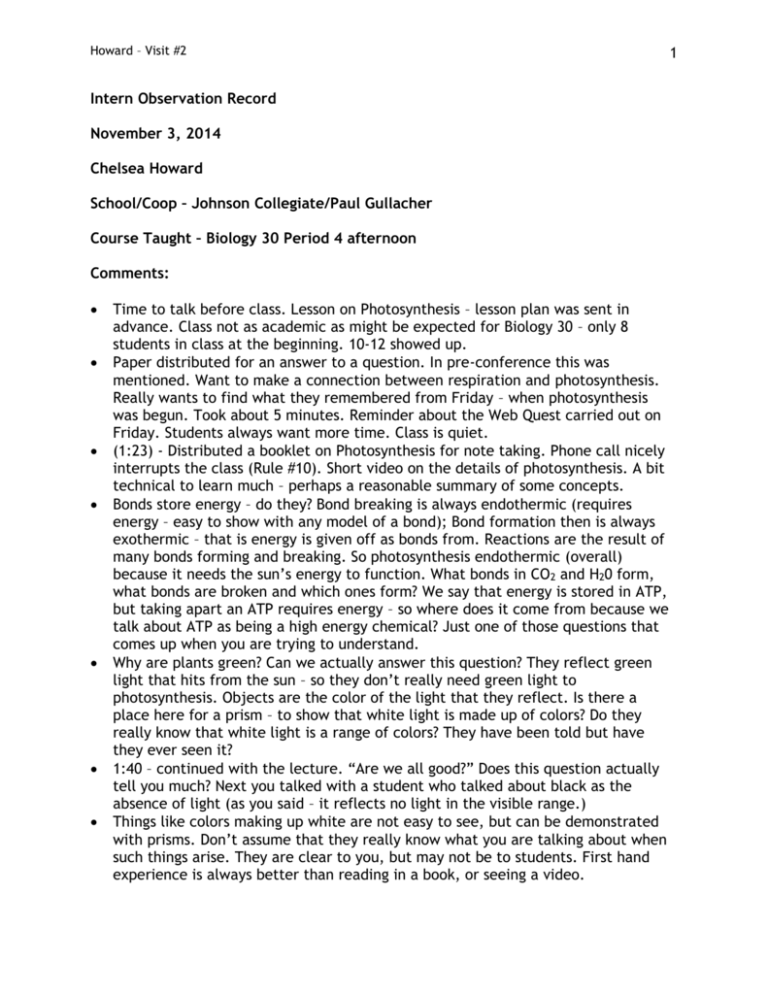
Howard – Visit #2 Intern Observation Record November 3, 2014 Chelsea Howard School/Coop – Johnson Collegiate/Paul Gullacher Course Taught – Biology 30 Period 4 afternoon Comments: Time to talk before class. Lesson on Photosynthesis – lesson plan was sent in advance. Class not as academic as might be expected for Biology 30 – only 8 students in class at the beginning. 10-12 showed up. Paper distributed for an answer to a question. In pre-conference this was mentioned. Want to make a connection between respiration and photosynthesis. Really wants to find what they remembered from Friday – when photosynthesis was begun. Took about 5 minutes. Reminder about the Web Quest carried out on Friday. Students always want more time. Class is quiet. (1:23) - Distributed a booklet on Photosynthesis for note taking. Phone call nicely interrupts the class (Rule #10). Short video on the details of photosynthesis. A bit technical to learn much – perhaps a reasonable summary of some concepts. Bonds store energy – do they? Bond breaking is always endothermic (requires energy – easy to show with any model of a bond); Bond formation then is always exothermic – that is energy is given off as bonds from. Reactions are the result of many bonds forming and breaking. So photosynthesis endothermic (overall) because it needs the sun’s energy to function. What bonds in CO2 and H20 form, what bonds are broken and which ones form? We say that energy is stored in ATP, but taking apart an ATP requires energy – so where does it come from because we talk about ATP as being a high energy chemical? Just one of those questions that comes up when you are trying to understand. Why are plants green? Can we actually answer this question? They reflect green light that hits from the sun – so they don’t really need green light to photosynthesis. Objects are the color of the light that they reflect. Is there a place here for a prism – to show that white light is made up of colors? Do they really know that white light is a range of colors? They have been told but have they ever seen it? 1:40 – continued with the lecture. “Are we all good?” Does this question actually tell you much? Next you talked with a student who talked about black as the absence of light (as you said – it reflects no light in the visible range.) Things like colors making up white are not easy to see, but can be demonstrated with prisms. Don’t assume that they really know what you are talking about when such things arise. They are clear to you, but may not be to students. First hand experience is always better than reading in a book, or seeing a video. 1 Howard – Visit #2 2 1:48 – how much are you expecting them to write on their booklets? They seem to be having trouble filling in the pages – so how can you deal with this in your next lecture? So what is a high energy bond? One that has a lot of energy – or something else? Can you imagine a different way to teach this lesson on photosynthesis? How can you have students more engaged in learning about photosynthesis? They are copying notes but how much are they understanding? How will they come to understand the details that you want them to learn? They clearly have to do more than just take these notes. You are not expecting them to know the material until they do some studying and rereading. Maple Leafs are red in the fall as the chlorophyll decomposes and allows the red pigment to show – so does this mean maple leafs reflect red light as well? How could you find out? Or, does the red pigment only form near the end of summer – perhaps in response to the ending of the chlorophyll? Not an easy question to answer. 1:50 – nearing an end. Much detail provided here. Hard for students to master the process without some other aids in learning. Otherwise you may only achieve getting them to memorize. Does this make sense? Again you are not really finding out much about what they have learned. Review video shown at the end to review content of lecture.




